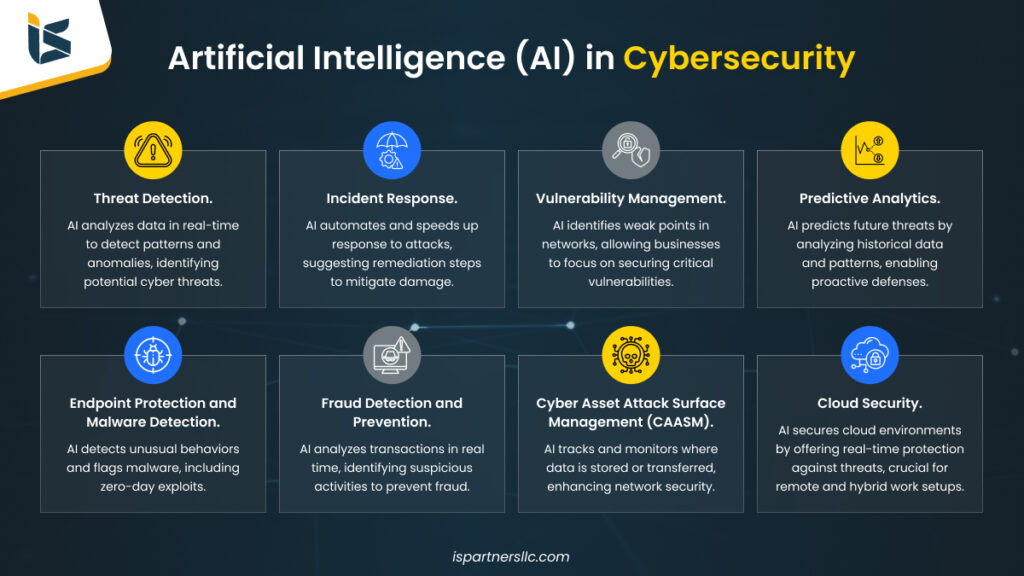
Revolutionizing Cybersecurity: The Power of Automated Incident Response
Estimated Reading Time
Approximately 10 minutes
Key Takeaways
- Automated incident response leverages AI and ML to enhance cybersecurity defenses.
- Efficiency and accuracy in threat detection and response are vastly improved.
- Real-time data analysis and autonomous decision-making are pivotal features.
- Organizations report significant success using these systems.
Table of Contents
- Introduction: The Need for Automated Incident Response in Cybersecurity
- Understanding Automated Incident Response
- The Role of AI in Incident Response
- Advantages of Cyber Incident Automation
- Exploring Automated Security Remediation
- Real-time Incident Response Capabilities
- Choosing the Right Automated Incident Response Solution
- Case Studies/Examples of Successful Implementations
- Conclusion: Embracing the Future with Automated Incident Response
- Call to Action
Introduction: The Need for Automated Incident Response in Cybersecurity
In today’s rapidly evolving digital landscape, the importance of incident response in cybersecurity cannot be overstated. As malicious actors become increasingly sophisticated, traditional manual response methods struggle to keep up with the sheer volume and complexity of cyber threats. This escalating challenge has paved the way for automated incident response, a cutting-edge solution that leverages technology to bolster and streamline cybersecurity defenses. Harnessing advanced tools can drastically improve the ability to identify, mitigate, and recover from cybersecurity incidents swiftly and efficiently. Read more about AI security solutions.
Understanding Automated Incident Response
Automated incident response utilizes artificial intelligence (AI), machine learning (ML), and advanced orchestration tools to automatically detect, analyze, and respond to cybersecurity threats. Unlike traditional methods, automation significantly reduces response times and ensures that actions taken against threats are consistent and timely. Learn more about AI threat detection.
Benefits of Automating Incident Response
- Efficiency: Automation accelerates threat detection, triage, and mitigation processes, vastly reducing the time needed to respond to potential incidents. Explore cybersecurity automation.
- Accuracy: AI-powered tools enhance precision by minimizing human errors and reducing false positives, allowing security teams to focus on critical issues. More info here. Further reading.
The Role of AI in Incident Response
AI has become the cornerstone of modern cybersecurity strategies, transforming AI incident response. By leveraging AI and ML, automated systems can process large volumes of data in real time, pinpointing anomalies and patterns that indicate potential threats.
Key Enhancements by AI in Incident Response
- Real-time data analysis: AI can continuously monitor networks to rapidly detect and contain suspicious activities as they happen. Learn more. More info.
- Adaptive learning: AI systems evolve by learning from past incidents, increasing their effectiveness against emerging cyber threats. Further details. Read more.
- Autonomous decision-making: AI implements intelligent, predefined actions—such as isolating compromised systems or blocking malicious traffic—without waiting for human intervention. See more. Find out more.
Advantages of Cyber Incident Automation
Adopting cyber incident automation provides organizations with a multitude of benefits over traditional manual processes:
- Time savings: Automated systems react instantly to potential threats, thereby minimizing downtime. Detailed insights here. Additional resources.
- Cost efficiency: Reducing reliance on human intervention can significantly lower operational costs while improving overall efficiency. Explore more. Read further.
- Complex threat handling: Automation adeptly manages intricate and large-scale attacks with precision and speed, which manual efforts would struggle to match. Further information. Explore now.
Exploring Automated Security Remediation
Automated security remediation is an integral component of automated incident response, focusing on minimizing the lasting effects of cyber threats. Typically, this process includes:
- Detection: Recognizing early signs of malicious activity, such as suspicious file uploads or abnormal network traffic.
- Containment: Isolating affected systems to prevent threats from spreading.
- Remediation: Deploying patches or removing malicious files as part of the recovery process. Discover threat integrator services.
This sequence ensures not only quick recovery but also reduces the chance of recurring incidents. Read more about remediation. Learn more about automated response.
Real-time Incident Response Capabilities
In cybersecurity, speed is essential. Automation brings real-time incident response capabilities that treat threats the moment they occur, minimizing their impact. Read about AI cyber defense.
Capabilities of Real-time Automated Response
- Automatically blocking malicious IP addresses or isolating infected endpoints within seconds.
- Preventing data breaches and ensuring the continuity of business operations without disruption. Read more. Explore further.
Choosing the Right Automated Incident Response Solution
Selecting an appropriate automated incident response tool requires careful evaluation of organizational needs and infrastructure.
Features to Consider
- Integration capabilities: Effective tools should integrate seamlessly with existing security systems, such as Security Information and Event Management (SIEM) platforms.
- Ease of use: Opt for solutions with user-friendly interfaces for easy policy customization and action monitoring.
- Scalability: Ensure that the chosen solution can convincingly adapt to your organization’s growth. Learn more about choosing tools. Explore decision-making factors.
Case Studies/Examples of Successful Implementations
Organizations that have switched to automated incident response report significant improvements when dealing with cyber threats.
Notable Examples
- An organization successfully contained, investigated, and remediated a malware attack on an endpoint within minutes using an automated system, preventing further spread. Case study.
- Global enterprises using AI-driven systems reduced response times considerably, allowing them to meet service level agreements (SLAs) while securing customer data. Read the success story.
Conclusion: Embracing the Future with Automated Incident Response
The increasing complexity of cyber threats demands a shift to automated incident response. This strategy not only enhances efficiency and accuracy but also positions organizations to preempt and counteract evolving threats proactively. As cyber environments become more challenging, businesses need to reassess their current strategies and consider integrating advanced automation solutions to modernize and fortify their cybersecurity defenses.
Call to Action
For organizations keen on revolutionizing their cybersecurity strategies, the time to explore automated incident response tools is now. Start by researching available solutions, evaluating their features, and selecting the one that best aligns with your unique needs. Share your experiences or questions about automated incident response in the comments section to join the ongoing conversation.
